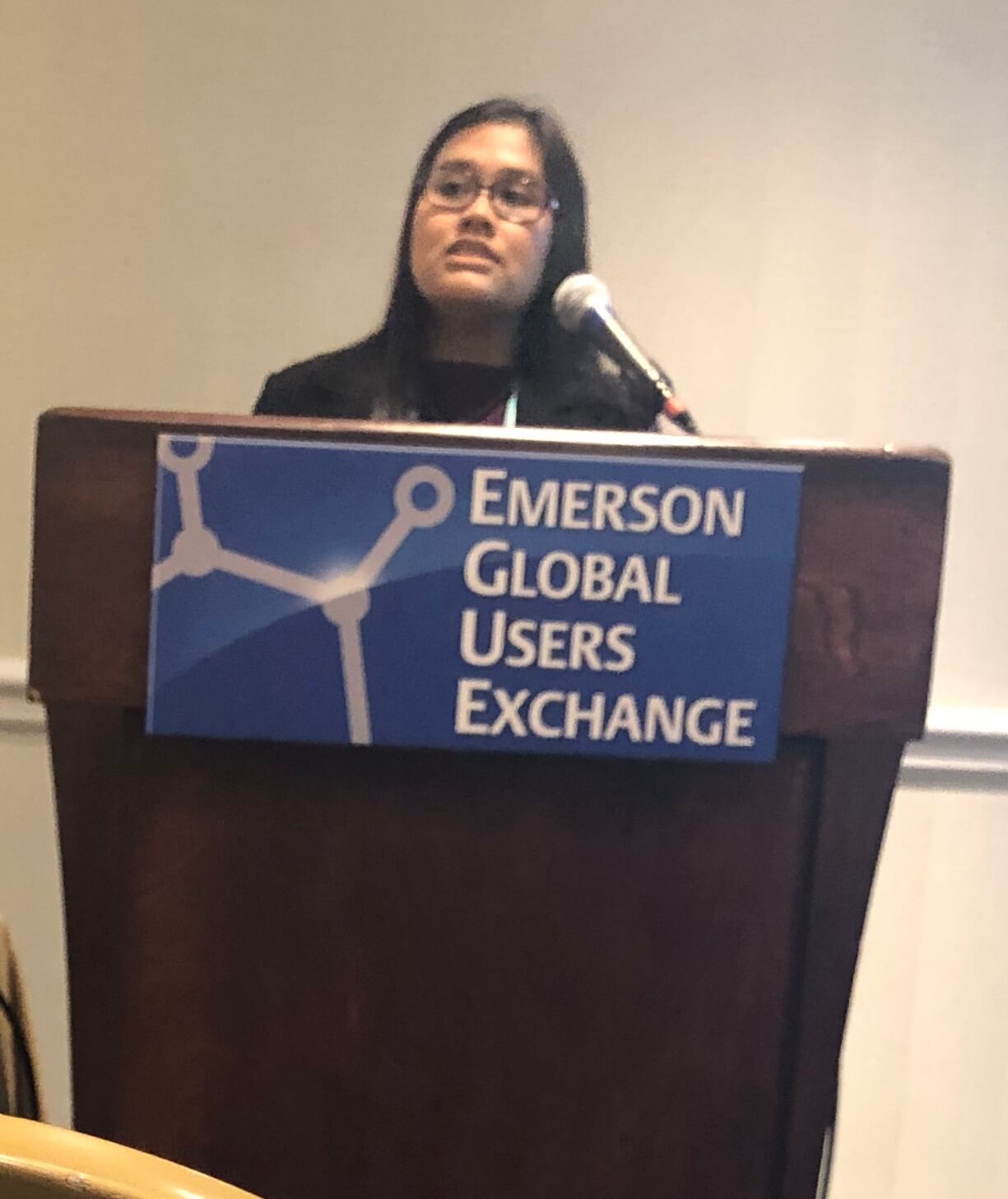 An Emerson local business partner’s Evelyn Rosales presented with a petrochemical producer, Maximize your Turnaround Efficiency using Connected Services at the 2019 Emerson Exchange conference.
An Emerson local business partner’s Evelyn Rosales presented with a petrochemical producer, Maximize your Turnaround Efficiency using Connected Services at the 2019 Emerson Exchange conference.
This petrochemical producer began valve condition monitoring a year ago on over 100 valves. Diagnostic data is automatically connected weekend with a monthly valve health summary report delivered to the plant. The objective to move away from a reactive and scheduled maintenance approach to a proactive, condition-based approach. This will help avoid unnecessary disassembly of the valves during the turnaround project.
The diagnostics also help prioritize the work that needed to be performed on the valves during the turnaround. Parts could be pre-ordered and be onsite and ready to use.
The valve condition monitoring report divides the valves into 3 different priorities with priority 1 being major impact valves in the process. A priority 4 was added to address valves with a “data impact” which are valves that require a review of the existing configuration.
A challenge of the facility is that it could be shutdown frequently based on the cost of the raw materials feeding the plant. When the costs were high, it was not economic to produce the petrochemicals and the plant was shut down. The presenter joked that as a result they were extremely good at startups.
It took 18 months to get the condition-based valve monitoring service sold to the management staff. Diagnostics found a valve with a broken stem that has caused a plantwide shutdown which finally sold the need for this valve monitoring connected service. The next turnaround is coming soon and the priorities of the work to be done with the valves is now set and the parts required secured.
Some examples of what needs to be done include a valve with an abnormal throttling range that will require resizing. Another example is a positioner that has a problem with the I/P converter which is affecting the actual position of the valve from what the control system wants it to be. The third example is a valve not closing properly and providing a tight shutoff that is required for the process.
Knowing these conditions in advance greatly improves the productivity of the maintenance staff to focus their efforts during the turnaround and not be on the critical path of the turnaround schedule.
Going into the turnaround, over 40% of the valves do not need to be touched and less that 60% of the 100+ valves will need some form of maintenance from very minor to major overhaul. The time required to perform these activities can be estimated much more accurately than was possible in prior turnarounds. Spare part purchases were reduced by a factor of 4. Another key benefit was reinforcing the condition-based approach practice for valve maintenance.
Looking forward, there will be more focus on valve optimization and valve performance to improve the reliability, production and energy management in their petrochemical production process.




